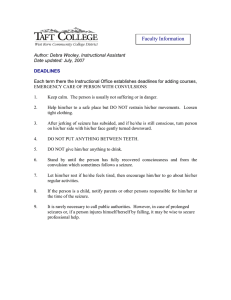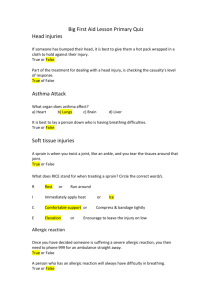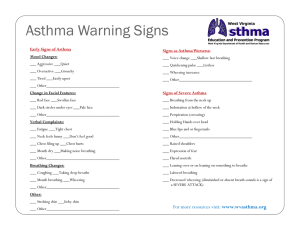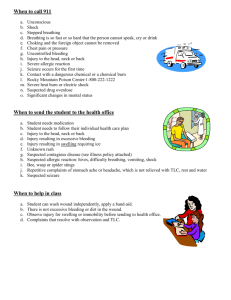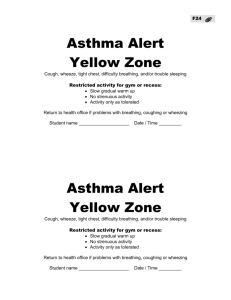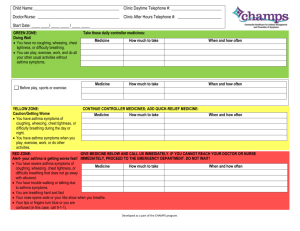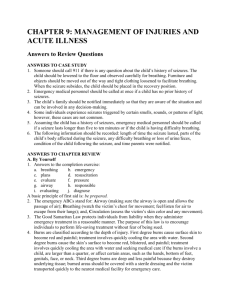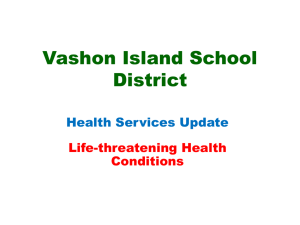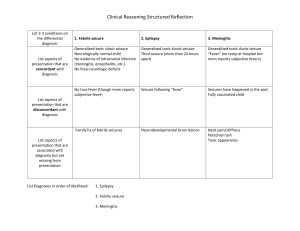GENERAL PROTOCOLS FOR EMERGENCY SITUATIONS
advertisement
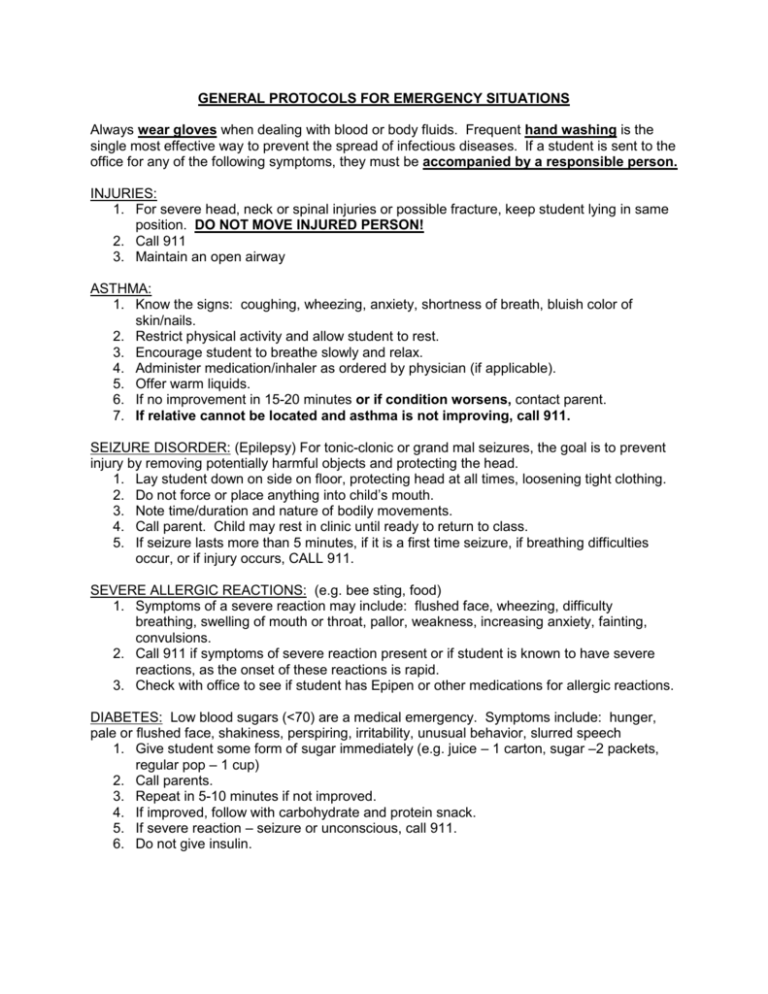
GENERAL PROTOCOLS FOR EMERGENCY SITUATIONS Always wear gloves when dealing with blood or body fluids. Frequent hand washing is the single most effective way to prevent the spread of infectious diseases. If a student is sent to the office for any of the following symptoms, they must be accompanied by a responsible person. INJURIES: 1. For severe head, neck or spinal injuries or possible fracture, keep student lying in same position. DO NOT MOVE INJURED PERSON! 2. Call 911 3. Maintain an open airway ASTHMA: 1. Know the signs: coughing, wheezing, anxiety, shortness of breath, bluish color of skin/nails. 2. Restrict physical activity and allow student to rest. 3. Encourage student to breathe slowly and relax. 4. Administer medication/inhaler as ordered by physician (if applicable). 5. Offer warm liquids. 6. If no improvement in 15-20 minutes or if condition worsens, contact parent. 7. If relative cannot be located and asthma is not improving, call 911. SEIZURE DISORDER: (Epilepsy) For tonic-clonic or grand mal seizures, the goal is to prevent injury by removing potentially harmful objects and protecting the head. 1. Lay student down on side on floor, protecting head at all times, loosening tight clothing. 2. Do not force or place anything into child’s mouth. 3. Note time/duration and nature of bodily movements. 4. Call parent. Child may rest in clinic until ready to return to class. 5. If seizure lasts more than 5 minutes, if it is a first time seizure, if breathing difficulties occur, or if injury occurs, CALL 911. SEVERE ALLERGIC REACTIONS: (e.g. bee sting, food) 1. Symptoms of a severe reaction may include: flushed face, wheezing, difficulty breathing, swelling of mouth or throat, pallor, weakness, increasing anxiety, fainting, convulsions. 2. Call 911 if symptoms of severe reaction present or if student is known to have severe reactions, as the onset of these reactions is rapid. 3. Check with office to see if student has Epipen or other medications for allergic reactions. DIABETES: Low blood sugars (<70) are a medical emergency. Symptoms include: hunger, pale or flushed face, shakiness, perspiring, irritability, unusual behavior, slurred speech 1. Give student some form of sugar immediately (e.g. juice – 1 carton, sugar –2 packets, regular pop – 1 cup) 2. Call parents. 3. Repeat in 5-10 minutes if not improved. 4. If improved, follow with carbohydrate and protein snack. 5. If severe reaction – seizure or unconscious, call 911. 6. Do not give insulin.
